Ertach Kernow - Richard Lander the men behind the statue
The Richard Lander memorial stands at the top of Lemon Street in Truro, here we consider the men behind the statue. Some statues have become quite controversial these days with many people these historic statues represent having recently fallen out of favour for many reasons. Perhaps we should look beyond the actual person being depicted and think about the person who created the work of art, their skill and their story and acknowledge that they should be the ones who are better remembered through their work.
One of Cornwall’s largest monuments is that of Richard Lemon Lander, a Cornish explorer, who was born in Truro on 8th February 1804. Both Richard and his explorer brother John, born in 1806, were sons of John Lander landlord of the Fighting Cock public house, later renamed the Dolphin Inn. This was situated on the corner of Quay Street and what would become Green Street following demolition of the building for road widening. Does the plaque marking Richard Landers birthplace still exist on the adjacent building?
Lander’s exploration in Africa includes what he is most remembered for, in determining the course and termination of the River Niger. Following his early death at just twenty-nine on 6th February 1834 from injuries received from a musket ball wound. He was buried in Malabo Cemetery in Bioko, formerly known as Fernando Po, now part of Equatorial Guinea. Lander was much lauded during his lifetime and was the first recipient of the prestigious Royal Geographical Society Founders Medal in 1832. More recent well-known Founder Medal recipients have included Sir Ranulph Twistleton-Wykeham-Fiennes in 1984 and Sir David Attenborough in 1985.
With the death and burial of this famous son of Truro in a far-off land, an article appeared in the Royal Cornwall Gazette regarding a meeting held on 26th May at Truro Council Hall. This resolved that a column be erected commemorating the intrepidity of the two brothers and that collection towards this should commence. An advert was posted in the Royal Cornwall Gazette on 30th August 1834 for a further meeting to be held at the Council Hall in Truro. This was ‘to take the necessary measures towards the erection of some public tribute to the African travellers Richard and John Lander’. In October the committee convened to agree the design and site for the column. Three drawings and models for the column were submitted by Mr P Sambell junior, Mr Jennings and Mr Brokenshire of Penryn. After some discussion Philip Sambell’s proposition was agreed and the site was to be at the top of Lemon Street.
The site was donated by Sir Charles Lemon and the foundation stone laid on 16th June 1835. There seems to have been some delay in the building work which was being carried out by Bowden of Helston. By early May 1836 the column was almost to its full height, albeit rumours of its stability were being circulated. However, on 21st May the architect Philip Sambell with two masons whilst establishing this luckily escaped when the whole edifice collapsed. Sambell survived by clinging to a scaffold pole. It was suggested that the builder Bowden was perhaps not up to the task and that Mr Pryor who had completed the De Dunstanville Monument at Carn Brea should be brought in to complete the work. This phase was mentioned in The West Briton on 7th July 1837, ‘the Lander Column has risen into form from the pile of ruins which occupied the site’, however the railings and statue remained uncompleted.
The architect, Philip Sambell, was a man who overcame considerable difficulties being both deaf and mute. He made great contributions to Truro architecture, much in existence today, and deserves to be far better remembered for these works. Some of his included the original St John’s Church close to the Lander memorial in Lemon Street and the Truro Savings Bank now home to the Royal Cornwall Museum as well as the adjoining Baptist Chapel also now part of the museum. The St Mary’s Methodist Church and Strangeways Terrace as well as it is believed Walsingham Place are also the work of Philip Sambell. Regency style suburban areas developed from the late 1820’s also had major contributions by Sambell including buildings within Castle Street, Edward Street, Frances Street, Little Castle Street, Ferris Town, St George’s Road, Victoria Gardens and Waterfall Gardens. Truro has much to appreciate Philip Sambell for, and its authorities have been wise in its maintenance of much of its historic heritage. There was a scare in 1964 when the council wanted to replace Walsingham Place with modern buildings. This necessitated intervention by poet laureate Sir John Betjeman who campaigned for Walsingham Place to be preserved. Fortunately, he was successful.
Sambell’s work extended to other towns including Falmouth, where he lived for a number or years, and Penzance with other works in Devon as well. As well as architecture he provided wide ranging research papers to a number of other organisations including the Royal Institution of Cornwall. Due to his speech impediment these were read out by other members to the audience on his behalf, and this certainly didn’t detract from his valuable contributions.
After the subject for the monument, and the column the final element was the statue. It wasn’t until 1849 that funds became available to finalise the monument and the person commissioned to carry out the work was Cornishman Neville Northy Burnard. The son of a mason from the small village of Altarnun Neville had carried out many works from an early age. It was his submission to the Royal Cornwall Polytechnic Society in Falmouth of ‘Christ bearing the cross’ in marble that brought him to the notice of Sir Charles Lemon and winning him a Second Bronze Medal in 1836. This was followed in 1837 by a carving of ‘Jupiter and Thetis’ winning a First Bronze Medal, in 1841 ‘Three Medallion Portraits’ winning a First Silver Medal and in 1843 ‘Contentment’ a Second Silver Medal.
By this time Burnard had been working at Place House in Fowey, the home of Cornish entrepreneur J T Treffry, afterwards working in London allowing him to become better known. In 1847 he was commissioned by the Royal Cornwall Polytechnic Society to sculpt in white marble a bust of the Prince of Wales, later King Edward VII. This was to commemorate visits to Cornwall by Queen Victoria and the royal family. This was at his suggestion as he wanted to progress his career and produce his own work through his own studio. In this he was fully supported by Sir Charles Lemon who donated £5.00 (£550 today allowing for inflation) and many other Cornish subscribers. The Prince sat for Burnard for eight days and they would often be visited by the Queen, making him very nervous, but as he described to a friend she spoke to him in a very kind feeling manner. The finished bust was much admired, being exhibited at the Polytechnic in Falmouth, the Royal Academy in 1848 and the Great Exhibition in 1851. Through this piece Burnard achieved many further commissions helping elevate him towards the upper ranks of British sculptors. It seemed inevitable that it would be Neville Burnard who would be asked to undertake the completion of the Lander memorial by creating the statue at the top of Sambell’s column.
In 1852 the journal ‘The Builder’ published the following. ‘The statue of Lander, the African traveller, by Burnard, has been finished and put up on its column in Lemon-street, Truro. The height of both column and statue is 70 feet. The figure is clad in loose trowsers and paletot, or frock coat, and holds a palm branch in one hand, while pointing with a scroll in the other, to a map of the Niger. The countenance in place of staring into in-definite definite space or vacancy, is directed towards the spectators in front. The likeness was made out by aid of Brockedon's portrait belonging to the Royal Geographical Society and Lander's own daughter, who is said to be remarkably like the portrait. In the proportioning of the column, the artist was aided by Mr. P. Sambell, of Falmouth, architect; and the whole was erected under the superintendence of Mr. Pryor, of Truro, builder.’
Philip Sambell never married and retired to Stonegate, Plymouth where he died in 1874 aged 76. Sadly, he is not particularly well remembered and perhaps should have some public memorial in Truro acknowledging his great contribution to this city’s attractive historic architecture. Alas, Neville Northy Burnard’s story does not end well, and he never reached the heights that perhaps his genius deserved. He had married in 1844 Mary Ann Nicholson and had a son and four daughters. Following the death of his daughter Lottie he seemed to have had mental and alcohol related issues and eventually became essentially a tramp in Cornwall. Burnard died at the Union Workhouse Illogan on 27th November 1878, his estate under £50 was left to his widow who at that time was living in Pimlico, London. He was buried at St. Martin and St. Meriadoc Churchyard, Camborne in an unmarked grave. In 1954 Camborne Old Cornwall Society erected a slate headstone to mark his burial.
Both these men left a rich legacy of works, including the Lander Memorial, where their individual skills and artistry combined to commemorate an adventurous Cornishman.
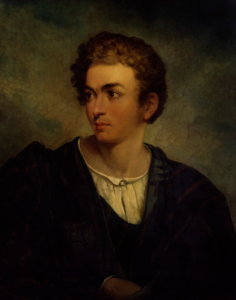
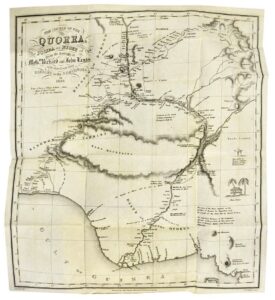
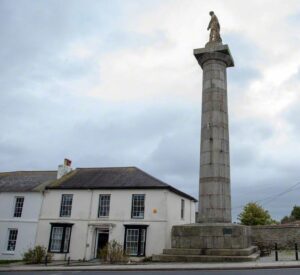
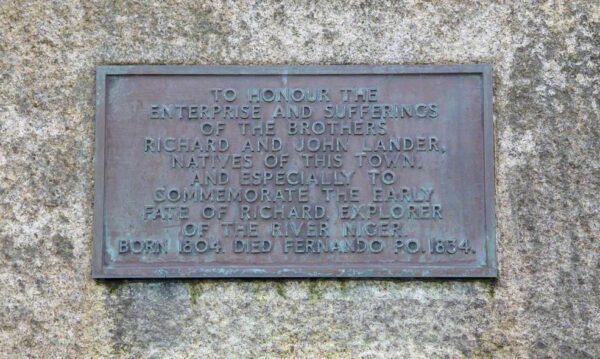
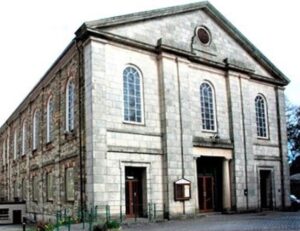
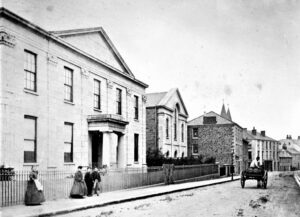
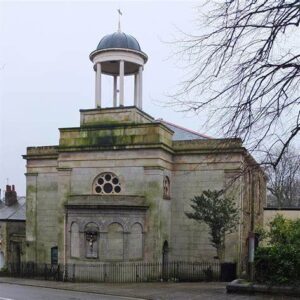
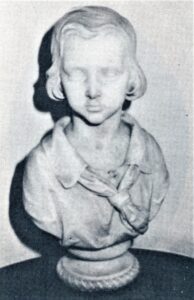
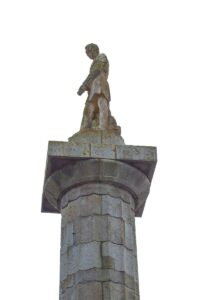
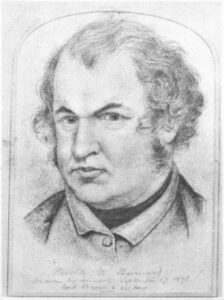
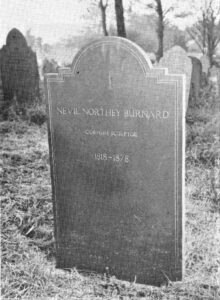
![[85] Voice - Ertach Kernow -09.02.22A The men behind a famous Cornish Statue [S] Ertach Kernow - The men behind a famous Cornish Statue](https://www.cornwallheritage.com/wp-content/uploads/2022/03/85-Voice-Ertach-Kernow-09.02.22A-The-men-behind-a-famous-Cornish-Statue-S-230x300.jpg)
![[85] Voice - Ertach Kernow -09.02.22B The men behind a famous Cornish Statue [S] Ertach Kernow - The men behind a famous Cornish Statue](https://www.cornwallheritage.com/wp-content/uploads/2022/03/85-Voice-Ertach-Kernow-09.02.22B-The-men-behind-a-famous-Cornish-Statue-S-225x300.jpg)
![[85] Ertach Kernow Heritage Column - 9th February 2022 - Early Cornish mineral riches Ertach Kernow Heritage Column - 9th February 2022 - Early Cornish mineral riches](https://www.cornwallheritage.com/wp-content/uploads/2022/02/85-Ertach-Kernow-Heritage-Column-9th-February-2022-Early-Cornish-mineral-riches-300x293.jpg)